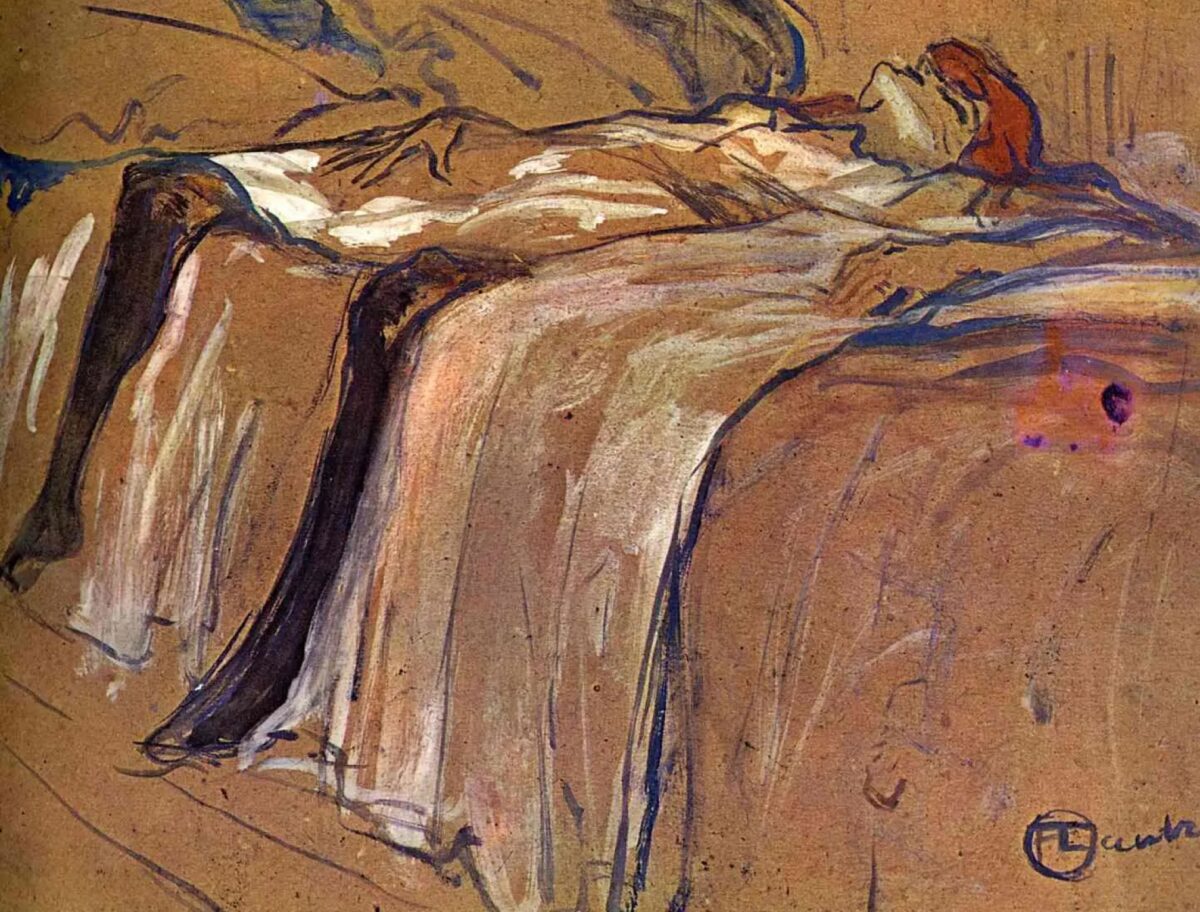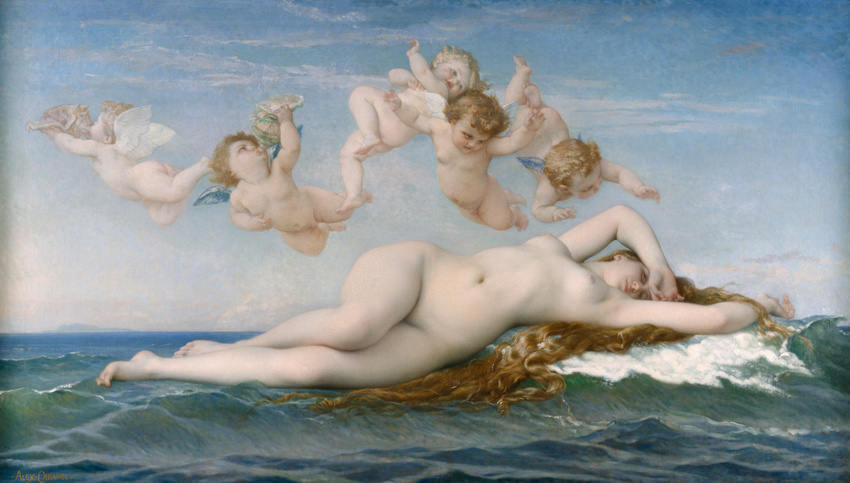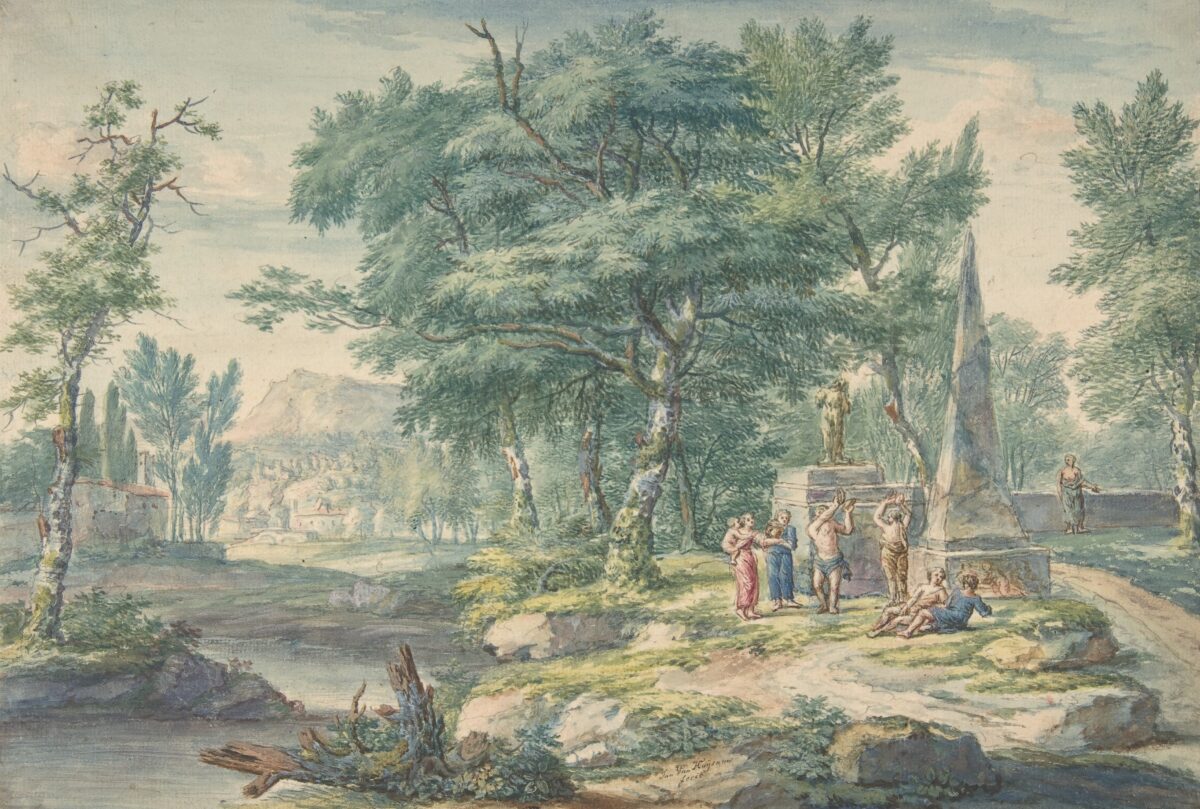Category Fashion
Published October 13, 2025
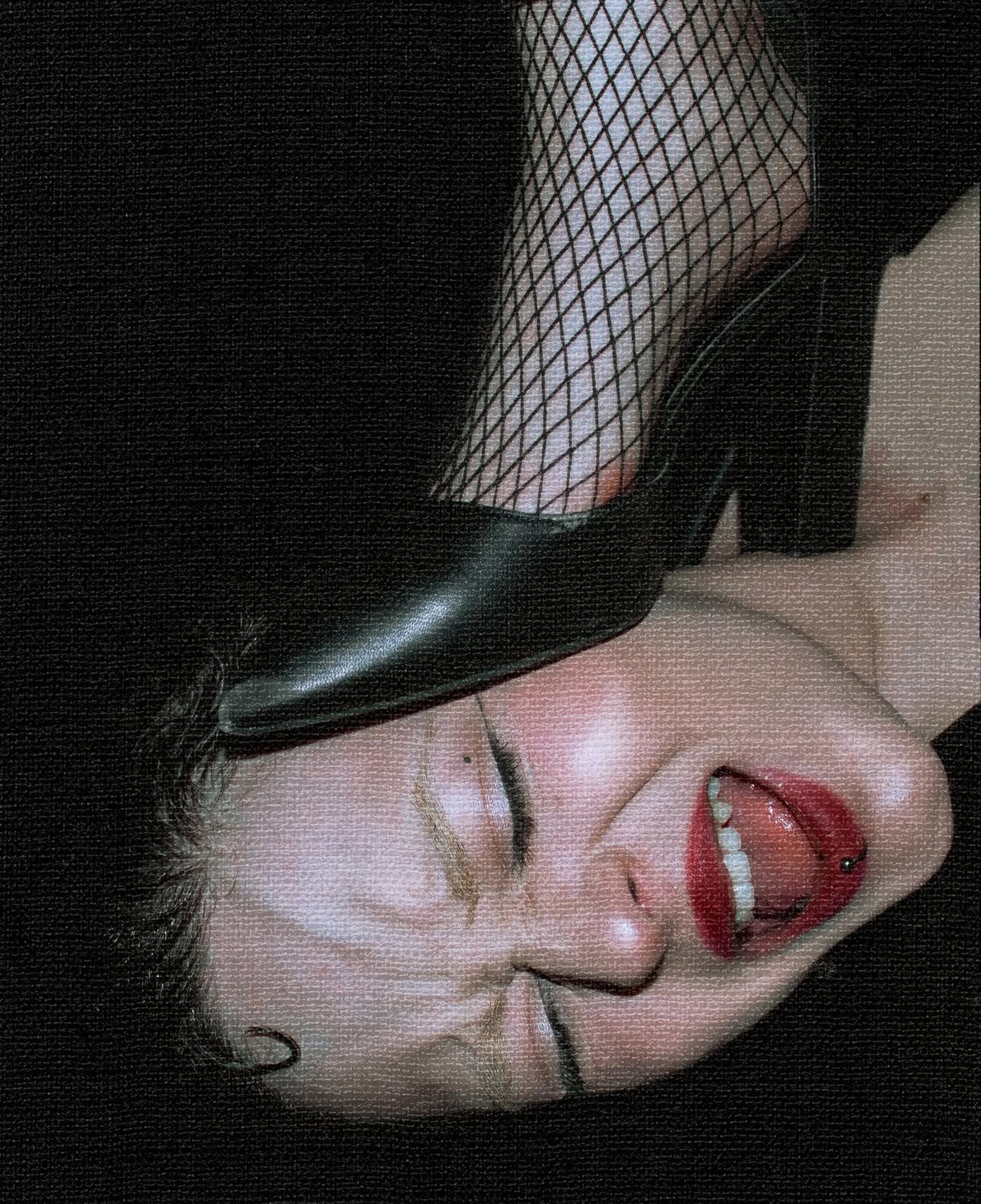
Untitled, by fortyfour (@__fortyfour), 2022 (curated by Evarte)
Story scent: a smell of a vintage lipstick (a scent that sends a powerful statement simply by existing)
Story best enjoyed with a taste of: Pain au Chocolat (because pain, and it has an attitude)
Play on repeat while reading: ‘What It Feels Like for a Girl’ by Madonna (obviously)
What a decade this fashion month was.
We truly live in unprecedented times. Our feeds are a dystopian cocktail of morning routines, crimes against humanity, Charli vs. Taylor beef and one historical event after the other. And fashion month, an occasion that used to be a beacon of light, beauty and joy, brought… even more chaos. I feel like we’ve all been swept away by the wind of change. Against our will. We’re tired. We’re overstimulated. And as the seeds planted during the great Creative Director Musical Chairs finally bloom (some were giving more rot and we’ll get to that), I want to get my spa voice on — the one of that wellness girly who just came back from a silent retreat in Bali — and invite you to take a deep breath.
Because we need to talk.
Confusion layer numero uno: We are officially in the Opinionfluencer era.
First, let’s address the elephant in our feeds. Once upon a time, influencers were all about iced matchas and get-ready-with-mes. The thing of the now is opinions. This makes me nostalgic for the good old days when we used to wait an entire month for Suzy Menkes or Cathy Horyn to drop a single review in print. Now, the model blessed to close the show barely steps off the runway, and TikTok has a hundred think dumps on it already. Barked at us by self-proclaimed experts.
What a great debut Jonathan Anderson had at Dior. Dior is now dead; he didn’t show anything of substance, and it’s just Loewe with a different logo. Blazy’s Chanel is for every woman. Dior was underwhelming. Nobody will ever measure up to what Galliano did at Dior. Dior was everything a cool girl wants to wear. Balenciaga is so cinematic — did you know the archetypes Demna dressed? Let’s decode each one of them. Blazy’s Chanel is for every woman. Lantik’s Gaultier was nothing but a disgrace. Chanel is over. But maybe the new CD needs time to settle? Miu Miu is doing soviet workwear? Groundbreaking. No, Lantik’s Gaultier was disruptive. You don’t understand — Miuccia is always playing with class codes. Oh, LOL, Kylie is gonna wear a Soviet apron soon. Balenciaga felt safe. Balenciaga was beautiful. Underwhelming. Beautiful. Over. Dreamy. Disruptive. Boring. Feminine. Ugly. Disgrace. Fjdfsajhafb…. ksAUFGskdbksd. GcdskugcfsifhsopJFSKA. JDHAtwlfpfnwyc,dpojafqrnwl. Gdldofndl. KIdbdlcjalad.
Error. Error. Error. Error.
I summon Beyonce to say “WORLD, STOP.” Because I don’t think the world in question will listen to anyone else.
Don’t get me wrong — I’m all for a good discourse. And I love that social media gave voices to people and disrupted the power structures because punks are not dead. But lately it feels like the volume is higher than it should be, and the depth left the chat.
So, without further ado, allow me to — ta daaa — shamelessly plug myself into the noise. I do consider myself a critic — and, humblebrag, I am a Central Saint Martins grad (trust me, I’ve earned my opinions). But this time, I’m not here to dissect brand codes and silhouette histories or give you hot takes on each collection. There is an abundance of that elsewhere. I’m here as a woman. Who loves fashion with all her might. Who turned to it to feel powerful when she felt far from it inside.
And lately it feels like fashion’s forgotten that woman.
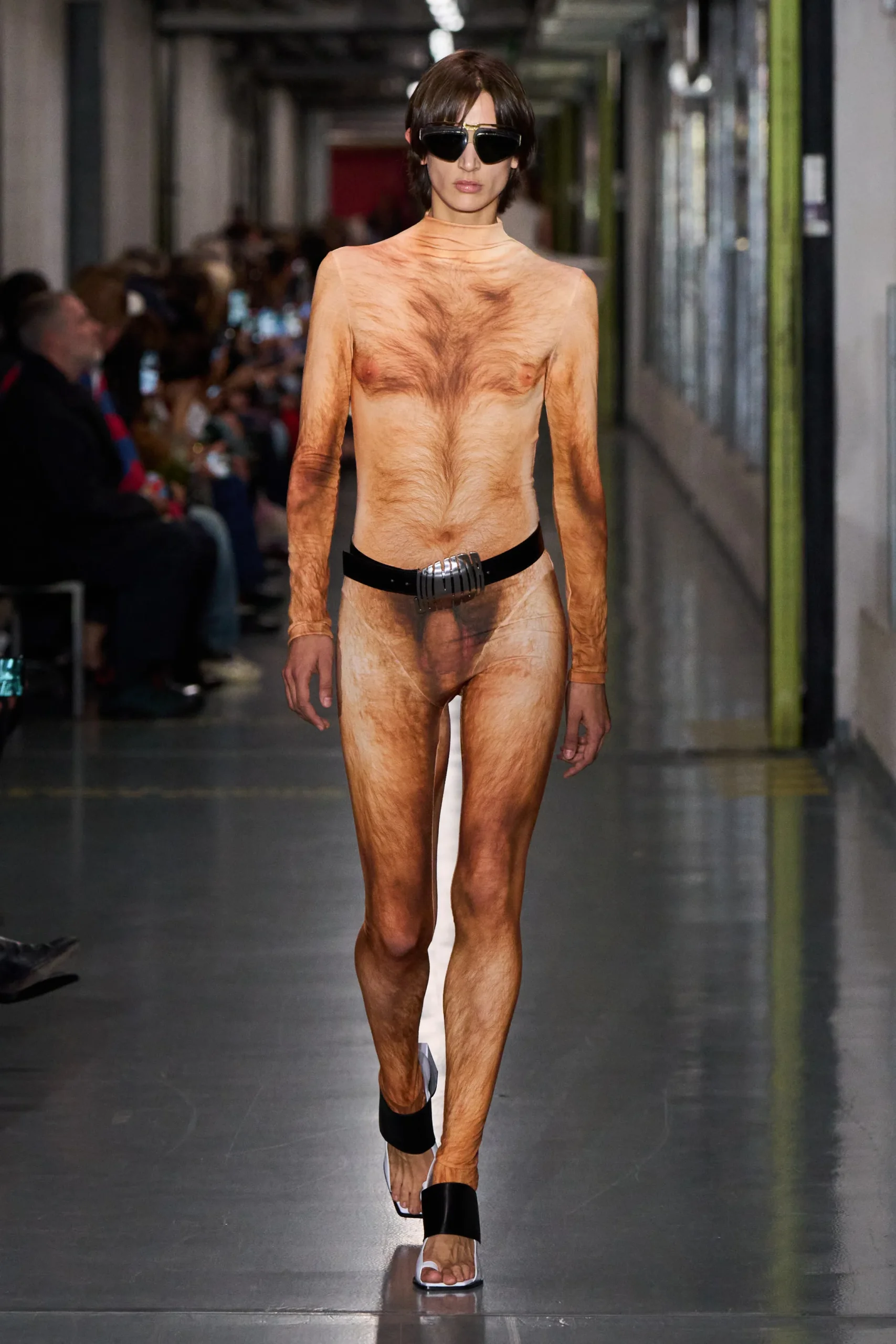
Jean Paul Gaultier SS26. Image courtesy: vogue.com
Confusion onion layer numero dos: What do women have to do with any of this?
I’m not American, but Anderson’s debut at Dior made me feel like one. In the sense that I finally understand what it’s like to be trapped in a space split by two opposing parties bickering at each other. As I proudly waved my pro-Dior flag on Notes by declaring, “I don’t care what the internet says, I’m a Dior girl now,” and observed the heated post-election-level discourse, I noticed something interesting — the critics who liked it were mostly women. The ones who called it “meh”? Mostly men.
Men who will never wear the clothes they have such violently strong opinions on. One even wrote — and I quote — “there’s nothing desirable there.” I’m sorry, but the math is not mathing. Later, deep in a Substack comment section (don’t ask which one, I blacked out halfway through), I realised I was arguing with, you guessed it, men again. And I thought — what am I even doing here?
The same pattern occurred with the much-talked-about Duran Lantink’s Gaultier debut: women wept; men said, “Um, chill, Gaultier himself did crazy shit before, remember?” Oh, we remember. But with all that, Gaultier made his woman theatrical, quirky, confident and unapologetically hot, all while playing with gender in a chef ’s-kiss-clever way. We looked at her and thought — I want to be her. We saved our money to buy Gaultier to be her. We hunted every thrift store in Paris for those iconic mesh tops to be her. Instead, we got? Dick leggings. Thanks.
For a brief moment, I asked myself the dreaded question: Have I become a boring prude? Was this my Duchamp “Fountain” moment — the urinal that also split the world in two? The fear of not being on the progressive side of history crept in for a second. But no. Something much deeper felt off. Then, the Gods of the algorithm led me to Bonnie Langedijk’s piece in HURS, “Is Fashion Afraid of Powerful Women?”She wrote:
The Spring/Summer 2026 fashion week season has concluded, and with it, any lingering illusion that fashion exists primarily to serve the women who wear it. What we witnessed across the major capitals was male fantasy masquerading as empowerment, constraint dressed up as liberation, a profound misunderstanding of what women actually need from the clothes we inhabit daily.
And then she dropped the mic:
But here’s what fashion refuses to acknowledge: there is a difference—a vast, unmistakable difference—between designing for women and designing at them.
This. This is why Lantink’s Gaultier debut felt like a sexist joke at a classy dinner party. Apparently, he told Rachel Tashjian, the fashion critic for The Washington Post, that he “knew exactly what he was doing.” Okay, the nerve is cute. But unfortunately, I can’t wear the said nerve and feel great in it. Also, I know an art-school-level project when I see one. I, too, have stapled fabric to a mannequin in my CSM days and called it a statement.
Here’s the thing: Christian Dior adored women so much he wanted them to feel beautiful after the horrors of WWII. Coco Chanel adored women so much she freed them from corsets. Jean Paul Gaultier adored women so much he dared them to unleash their raw sexual power. Even Demna, with his meme-core extravaganza at Balenciaga, clearly adores women — he makes them look sexy, alien, and alive, without crossing into mockery.
Because love, reverence, and respect always show — whether in a hemline or a headline. So while Anderson’s Dior might not be everyone’s cup of matcha, at least the respect was there.
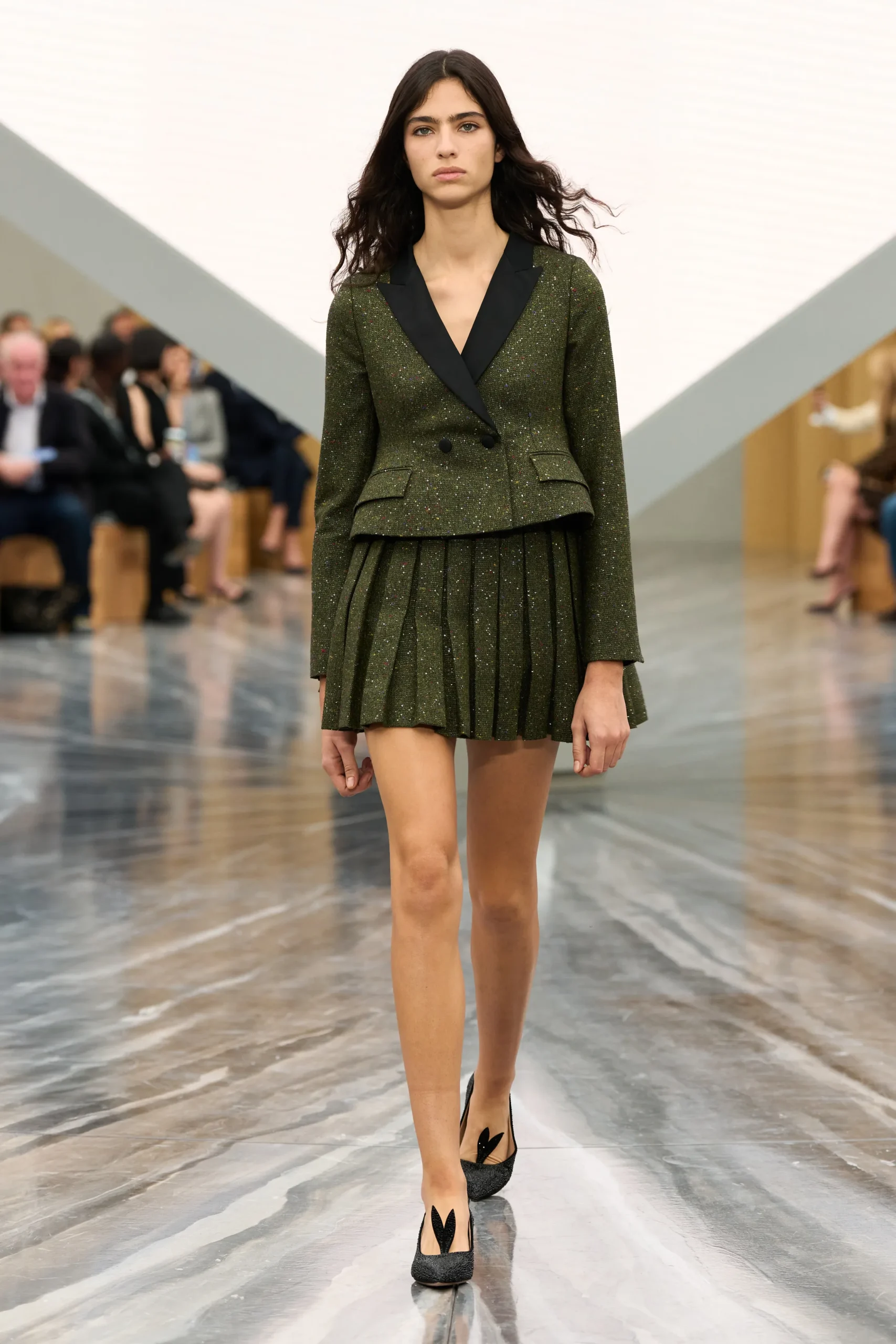
Christian Dior SS26. Image courtesy: vogue.com
Confusion layer numero tres: “We Worry Too Much About Rich People” — do we, though?
Then, divine guidance led me to Rachel Tashjian’s latest Substack piece, “We Worry Too Much About Rich People.” In it, she writes:
One, we act as if these people (and they’re mostly women, which I think is notable — because we find it very easy to say what women think, which is crazy) are going to fall down at the door of the Avenue Montaigne boutique if they can’t find a jacket or a shirt they want to buy at Dior. Women are not helpless creatures yoked to the whims of French fashion houses.
Buying expensive clothing is not the same as buying skim milk: If you don’t like the goods at one place, you just go to another. There are at least 10 fashion houses with couture ateliers that make extraordinary clothes with unbelievable craftsmanship.
Here is my diss track:
Okay. But what about the aspirational woman? The one who spends money she doesn’t have to buy into the vision of the house, not just the product? Rachel’s essay is a great example of how fashion journalism often treats women’s emotional investment in fashion as a frivolous attachment rather than a meaningful relationship. I’ve been noticing this for a long time — critics talk about “the client” as if she’s some faceless oligarch with unlimited Amex credit, and never about us — the women keeping fashion emotionally alive. The dreamers. The believers. The women who choose vintage Tom Ford Gucci over a week of groceries. Because, according to our twisted girl math, it feeds us more.
Also, aren’t we all exhausted by the whole “eat the rich” rhetoric? We get it, capitalism sucks, wealth is unevenly distributed, but that’s not the conversation here. The point is not pitying billionaires. It’s asking why fashion journalists seem to forget that behind every brand identity is a woman — actually millions of them — trying to build her own in a world that really doesn’t make it easy.
Tashjian also says: “One of my least favourite fashion-criticism tropes is house codes. I don’t know what that means or why anyone cares”.
WOMEN CARE.
Because once again, this neglects the emotional architecture of fashion. We want to connect to the essence of the woman the brand is channelling. We build our wardrobes around who we dare to be today and who we’re daring to be next. When we look through the runway looks, we ask ourselves:
Am I a Comme Des Garćons artsy weirdo?
Or Blazy’s Chanel woman — elegant, rich, untouchably calm?
Am I Anderson’s modern and mildly quirky Dior lady?
Am I an Incazzata or a Ragazza in Demna’s new Gucciverse of archetypes?
Etc., etc, etc.
And yes, I very intentionally titled this piece after Madonna’s song, “Do you know what it feels like for a girl?” Because she was fierce enough to ask that question in a cone-boob corset designed by… who? That’s right. Jean Paul Gaultier. Maybe that’s the real punchline: the male critics, the Substack threads, the “client commiseration crisis” — they still don’t get what it feels like for a girl.
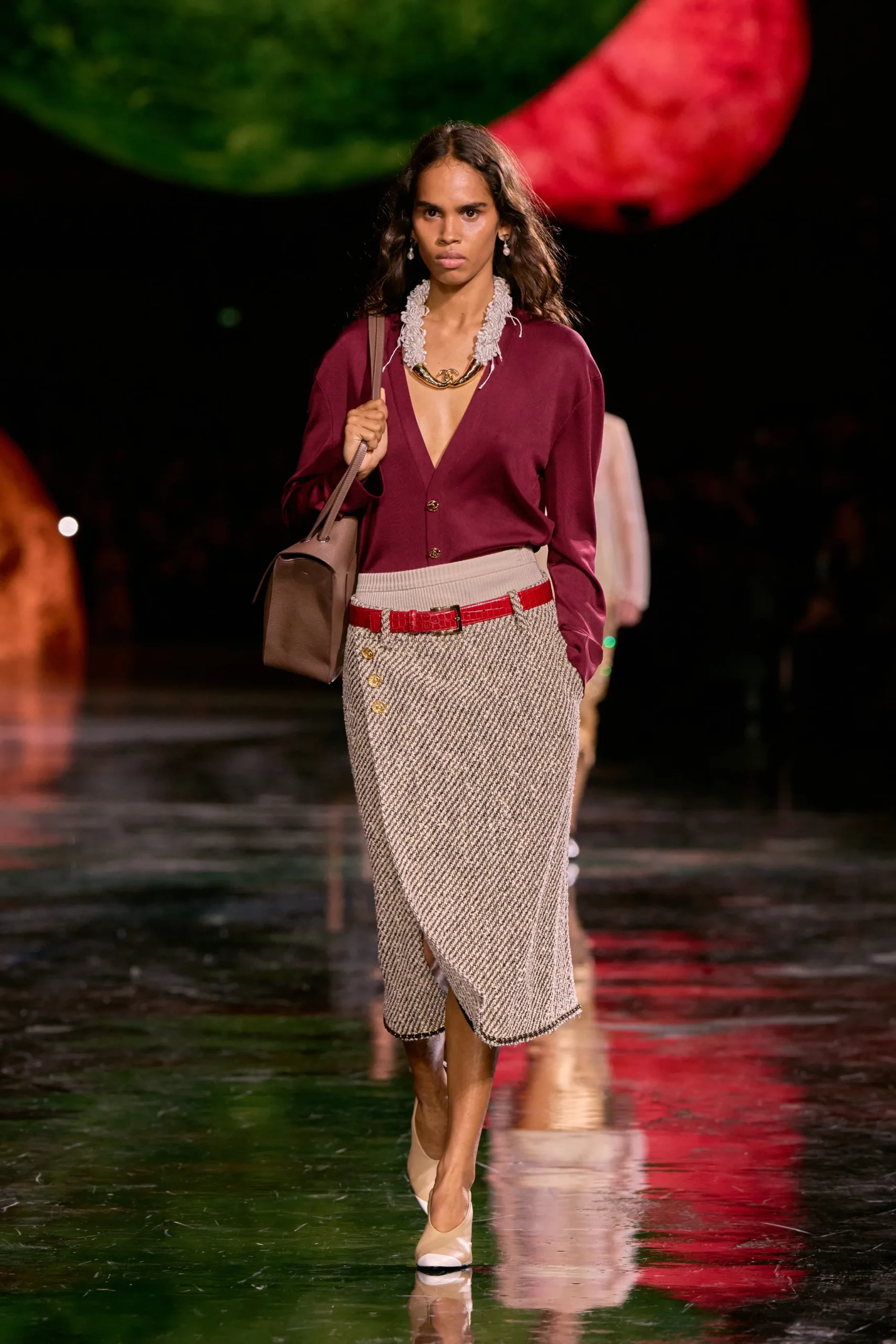
Chanel SS26. Image courtesy: vogue.com
In Conclusion: Dear Fashion, Do You Even Like Us?
We think in memes now. Even collections get reduced to reaction gifs before they’re deeply understood. And let’s be honest — women, too, have been memeified. Against our will. We’ve become the punchline. The aesthetic. Clean girl. Mob wife. Indie sleaze. Tomato girl. You name it. Each season, a new costume. Each Pinterest trend — another cage.
The internet screams a cacophony of opinions, emotionally detached critics scream theories, the runway screams spectacle and — oh, fatphobia is back in fashion, apparently. The noise is so loud that it’s getting progressively harder for us women to hear ourselves. Meanwhile, the economy’s unstable, the world still runs on male design — literally and structurally — and yet we’re told to “just buy somewhere else.” It’s exhausting to the point of me personally having actual conversations with my female friends about starting a commune in Costa Rica, drowning our phones in the ocean and living off the land. We laugh, but deep down we know it’s not funny.
So yes, when someone like Matthieu Blazy gives us Chanel that’s calm, sensual, and actually wearable, we exhale. Because for a moment, it feels like someone’s speaking to women again — not yelling at them. At us. That’s all we want: dialogue instead of noise. Reverence instead of ridicule. Clothes that see us — not clothes that meme us. Is that too much to ask?
Dear fashion world: hire more women. Let us speak for ourselves. Let us design for ourselves. We need more women in charge — at the sketch tables, at the fittings, in the boardrooms. Because the discourse is so loud, it’s drowning out our intuition. And dear brands, please don’t forget that we don’t just want to look good. We want to feel understood.
Because, unfortunately, what it feels like for a girl right now is this: sometimes the only rebellion left is a pair of patent boots that scream, “I take up space unapologetically.”
That’s all.
(Yes, in Miranda Priestly’s voice.)
